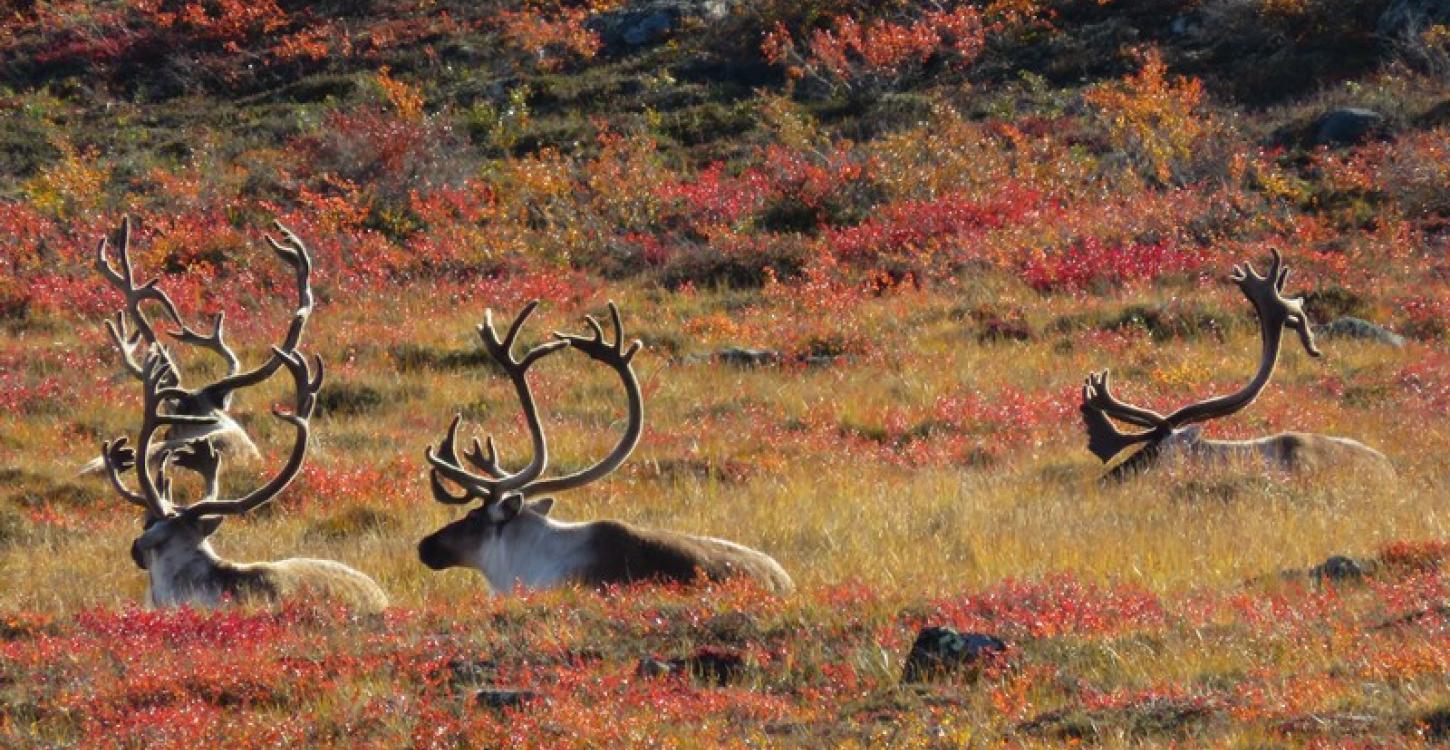
Barren-ground caribou (Photo: Catherine Graydon)
CARMA 9 -Caribou Recovery in a Changing Landscape
April 20, 2018
Joseph Judas and Jody Pellissey, Executive Director, WRRB, participated in the CARMA 9 meeting in Whitehorse, Yukon on March 6-8, 2018 on behalf of the Board. The CircumArctic Rangifer Monitoring and Assessment (CARMA) Network brings together people from seven Arctic nations, including Canada, to share information about the future of migratory barren ground caribou and wild reindeer. This year’s conference focused on how the caribou landscape is changing and what that might mean for caribou recovery.
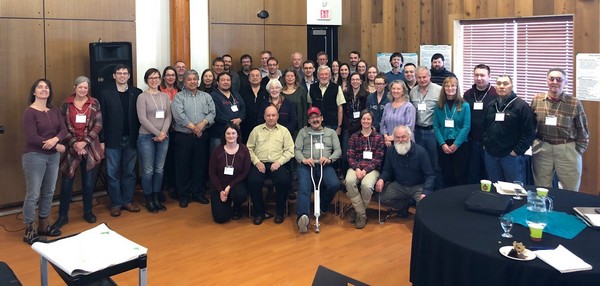
(Photo: Joseph Judas, second from left in second row and Jody Pellissey, fourth from left in third row, along with other CARMA 9 participants)
Internationally, taking all caribou and wild reindeer types (forest or boreal; mountain and tundra) into account, abundance has declined overall by an estimated 40% from about 4.8 million to 2.9 million individuals over three generations (around 21-27 years) across their circum-Arctic ranges. (Source: CARMA) In terms of barren-ground caribou specifically, most of those herds, including the Bathurst caribou, are experiencing declines. Ranging across the circumpolar North from northeastern Alaska to western Hudson Bay and Baffin Island, barren-ground caribou numbered more than 2 million individuals in the early 1990s. The current population is estimated at about 800,000. Of those, approximately 530,000 reside either partially or entirely in the NWT.
Evidence from both local traditional knowledge and scientific studies suggests that most herds have undergone natural fluctuations in numbers in the past; however, the cumulative effects from multiple interacting threats are considered without historical precedent. As a result, barren-ground caribou were assessed as a Threatened species by COSEWIC in 2016. Weather, climate change, forage availability, predation, parasites and diseases, harvest, forest fires, and industrial development are all factors that likely have a part to play in the declines.
CARMA 9 participants heard presentations on the changing landscape and took part in break-out groups to share their observations of changes on the land due to natural factors such as a warming climate and human-related or “anthropogenic” factors such a roads and other disturbances. Understanding the impacts of wildfires, climate changes, and other disturbances on the caribou’s seasonal ranges will be valuable in managing caribou and their habitat.
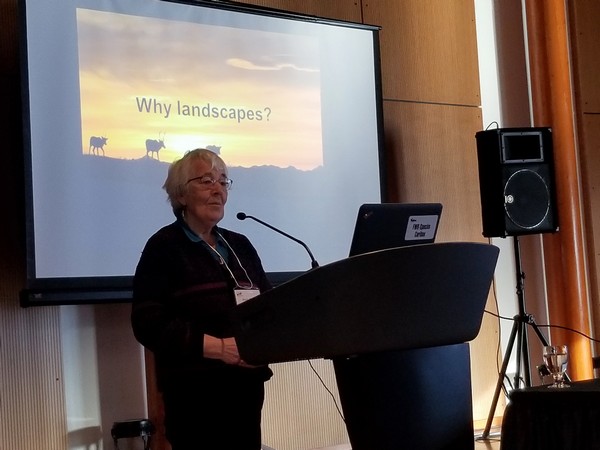
(Photo: Dr. Anne Gunn presenting at CARMA 9. Over the past few years, Dr. Gunn has provided technical advice on barren-ground caribou conservation and management for the WRRB)
In their first break-out group, participants looked at key drivers of the changing landscape, including climate, fire, and parasites / diseases. Forest fires, for example, can change landscapes and their vegetation, affecting the availability of caribou food. Discussion focused on fire and food landscapes, and the importance of monitoring changes in caribou forage and climate. The groups also recommended strategies to respond and adapt to “natural” or inevitable landscape change.
Day 2 of the meeting focused on the key anthropogenic factors and drivers of the changing landscape, and on management strategies for stimulating caribou recovery. It addressed predation, humans and their activity in relation to the changing landscape, as well as tools and approaches for managing landscapes in an uncertain world. The meeting was an excellent way to share information on managing caribou herds in changing landscapes, drawing on the larger international experience of the group. A speaker from Norway described Norway’s experience with caribou management and two presenters from Russia spoke about the challenges to recovery.
CARMA 9 wrapped up with a discussion on taking action and using the available tools to manage caribou recovery.
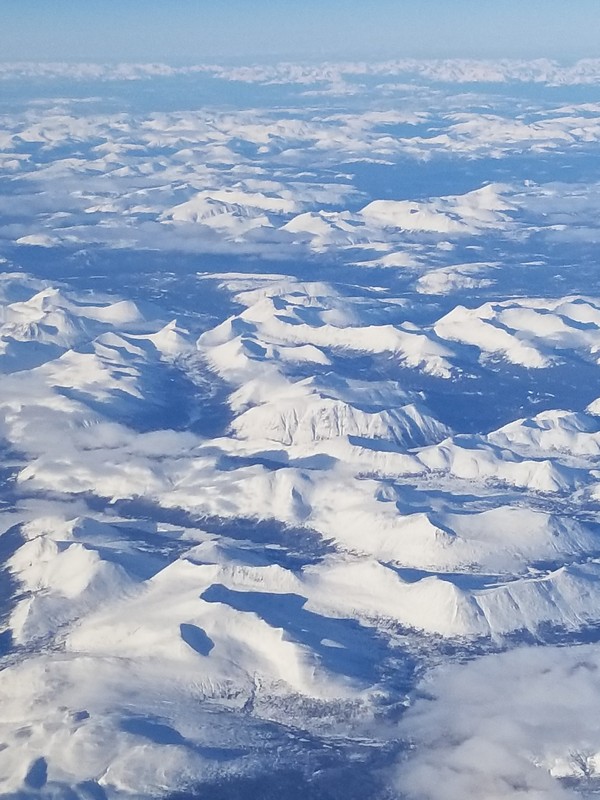
(Photo: Rugged snow-covered mountain peaks and deep river valleys characterize the Yukon landscape. Jody Pellissey, WRRB)
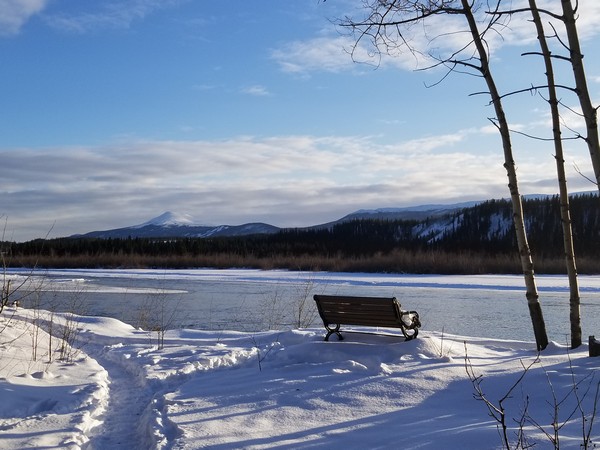
(Photo: Whitehorse, Yukon on the shores of the Yukon River, with view of the Coast Mountains. Jody Pellissey, WRRB)